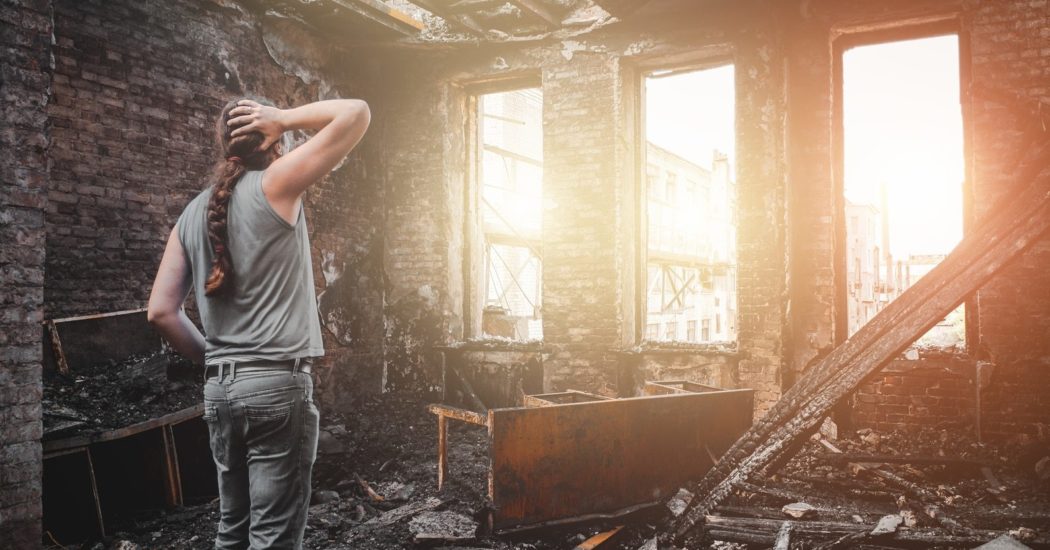Many companies all over the world rely on machinery and equipment of all kinds to carry out their day to day operations and continue to function as intended, creating products or supplying services to their customers and clients.
Much of this equipment is designed to be strong, sturdy, reliable, and long-lasting, but it isn’t immune to all kinds of damage, and even the toughest pieces of gear can struggle and suffer when fires break out, potentially causing serious, long-term effects for your business.
Fires are, in fact, some of the most devastating disasters a company can ever have to deal with, in more ways than one. It’s not just the fire itself that causes the damage, but also the soot, chemicals, and even the water used to put the fire out. Here’s how it all works.
Contents
Fire Damage

Fire damage is directly caused by the flames themselves and can also be referred to as thermal or heat damage. The intense temperatures of a fire can melt materials of all kinds, causing pieces of equipment to fall apart, lose their shape, or get warped as time goes by.
Even though many materials like metals, carbon fibers, and glasses used in company equipment have high melting points, they can still experience warping and deflection from the extreme temperatures of the fire itself.
Soot and Smoke Damage
The intense heat of the flames can push soot, which is a by-product of incomplete combustion, around the space and into the air. It spreads quickly through smoke, covering everything it passes over. Soot is quite an acidic substance too, meaning that it can be very destructive to other substances and materials upon making contact with them.
Over time, if soot is left upon a surface like a metal, it can oxidize and degrade it. This can lead to corrosion, discoloration, and other issues. Paints and finishes on your machinery and equipment may start to go yellow and wear away due to the acid, while some pieces of equipment will be corroded entirely by this secondary form of fire damage, and the acidic reactions and effects of soot will continue to take place until it is properly removed.
Water Damage
Even when a fire is being put out and the terrible effects of the flames and smoke are being put to an end, more damage can actually be done to your equipment in the process. Water that is used for fire suppression or control can turn into steam upon contact with very hot materials and surfaces.
This steam increases the pressure inside the space, which can cause expansions and contractions in pressure that can do great damage to many materials, even being capable of physically damaging the strongest of substances like structural steel and heavy machinery.
Chemical Damage
It’s also often the case that the by-products of the fire itself interacting with various substances and materials around the workplace, combined with those additional substances introduced when controlling to control the fire and clean up the affected area can lead to the generation of many new chemicals, acids, heavy metals, and other toxic hazards too.
Once again, more damage can be caused here as dangerous acidic chemicals come into contact with items of machinery that have already been damaged and degraded due to the flames, the smoke, the soot, the water, and so on. All kinds of chemicals can be produced during and after fires, doing a lot of damage to your equipment, and they need to be handled with great care by expert restoration and repair specialists.
Final Word
If a fire breaks out at your place of work, the first priority is, of course, making sure that all workers and anyone else in the area gets out safely, but after that’s taken care of, you’ll need to focus on your equipment.
In just seconds, fires can do untold damages to expensive machinery, office suppliers, warehouse equipment, and more, and as we’ve seen above, soot, chemicals, and water can make that damage even worse.
Electrical, electronic, and mechanical equipment can all suffer from these damages and must be tended to properly, diagnosed by trained professionals, and restored to the highest standards to help your company get back on track.
Being aware of the risks of fire and soot damage can help you be better prepared should a fire occur, giving you the knowledge needed to contact the right people and take the correct course of action for the best end result for your company.